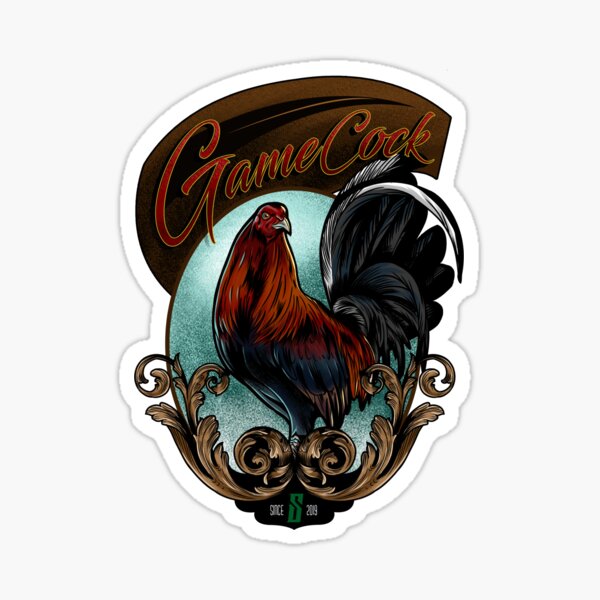Tricks of the Sabong Grandmaster: Understanding the Art of Cockfighting
The intricate world of cockfighting, specifically as exercised by the Sabong Grandmaster, supplies a remarkable research in the convergence of pet habits, training methods, and competitive method. To absolutely grasp the subtleties of this art kind, one have to explore how the Grandmaster harmonizes the physical and mental facets of rooster training while navigating the honest factors to consider inherent in this typical method.
History of Cockfighting

As the centuries proceeded, cockfighting spread throughout various continents, adjusting to neighborhood personalizeds and social dynamics. In middle ages Europe, it gained appeal among the nobility, that concerned it as a display screen of wide range and status. By the 17th century, the sporting activity had actually established itself in England, leading to the development of defined regulations and laws.
In the Americas, particularly in the Caribbean and the Philippines, cockfighting took on one-of-a-kind characteristics influenced by aboriginal methods and early american backgrounds. Today, while the sporting activity remains debatable and deals with lawful obstacles in lots of areas, its historic value continues to spark conversations regarding animal rights, cultural heritage, and social worths. The development of cockfighting reflects more comprehensive motifs of human interaction with nature and the complexities of practice.
Understanding Fowl Actions
Understanding rooster actions is important for those associated with the sport of cockfighting, as it directly influences health and wellness, efficiency, and training. Fowls exhibit a series of behaviors that can suggest their physical and psychological states. Significantly, aggressiveness, territoriality, and social power structure play considerable duties in their disposition.
Aggressiveness is a natural instinct in fowls, primarily driven by the demand to insist supremacy. Observing communications among fowls can reveal their chain of command, which is vital for managing their setting. A positive fowl shows a more assertive stance, while a submissive one may show indicators of stress and anxiety or fear, such as crouching or preventing eye get in touch with.

Training Strategies for Champions
Effective training techniques are critical for establishing champion roosters that master the competitive arena of cockfighting. An organized method makes certain that each bird reaches its complete potential, integrating physical fitness with psychological determination.
To begin, developing a consistent training program is important - Sabong Grandmaster. This consists of everyday exercises that enhance toughness, dexterity, and endurance. Regimens may entail controlled sparring sessions with both synthetic and real-time challengers to replicate competition, enabling fowls to refine their fighting abilities in a secure environment
Incorporating agility drills, such as barrier training courses and jumping exercises, significantly enhances a fowl's physical abilities. Additionally, introducing different surfaces and terrains can enhance their versatility throughout fights.
Psychological training must not be ignored. Familiarizing the birds with the sounds and views of an affordable atmosphere can decrease stress and anxiousness on battle day. Furthermore, positive reinforcement techniques, such as satisfying preferable actions, can instill self-confidence in the roosters.
Last but not least, preserving a tranquility and assertive visibility during training sessions fosters count on between the fowl and the handler, vital for attaining optimal efficiency. With each other, these methods create a comprehensive training regimen that grows champions prepared to master the arena.
Wellness and Nutrition Fundamentals

Including a mix of barley, corn, and wheat offers required carbohydrates, while healthy protein sources such as fish meal, soybean meal, or insects support muscle advancement and healing. Furthermore, integrating fresh vegetables and fruits can improve the total dietary profile, supplying anti-oxidants that enhance the immune system.
Hydration is just as crucial. Access to tidy, fresh water ought to be a top priority, as dehydration can seriously affect efficiency (Sabong Grandmaster). Normal health examinations are important to check for any type of possible diseases or parasites that might jeopardize a rooster's condition
Furthermore, the timing of feed is important. Offering nutrition at appropriate intervals makes certain that try this fowls preserve energy degrees throughout their training and recovery stages. By focusing on these health and wellness and nourishment fundamentals, sabong enthusiasts can assist their roosters accomplish ideal performance in the competitive arena.
Techniques for Successful Suits
Success in cockfighting hinges on a combination of calculated preparation and in-ring techniques. Efficient match methods begin long before the fight, with careful selection of the rooster. Breeders need to focus on hereditary qualities such as stamina, resilience, and aggressiveness, making sure that the picked bird shows a solid family tree of performance.
Training is critical; fowls should be conditioned with a routine that consists of workout, competing with other birds, and exposure to various atmospheres. This preparation not just constructs strength but likewise boosts the bird's flexibility to different opponents.
During the suit, a trainer has to utilize keen monitoring and quick decision-making. additional hints Recognizing the opponent's techniques enables prompt changes, such as moving the rooster's stance or urging more hostile actions. When to limit the bird or motivate can indicate the difference in between triumph and loss., timing is important; understanding.
Lastly, maintaining a tranquil temperament during matches promotes confidence in the rooster. A well balanced technique, incorporating both mental and physical readiness, eventually results in successful outcomes in the arena, showing that proficiency in cockfighting is as much about approach as it is about the birds themselves.
Verdict
The proficiency of cockfighting, as exhibited by the Sabong Grandmaster, rests on a comprehensive understanding of rooster actions, effective training methods, and ideal health and wellness and nourishment. By integrating traditional practices with contemporary methodologies, champs are grown, showcasing outstanding strength, agility, and durability. Strategic insights throughout suits further boost the likelihood of success. Ultimately, the tricks of the Sabong Grandmaster depend on the harmonious balance of these elements, guaranteeing next the continued tradition of this ancient sporting activity.
To truly comprehend the subtleties of this art kind, one must check out how the Grandmaster integrates the emotional and physical aspects of fowl training while navigating the ethical factors to consider intrinsic in this standard practice.Recognizing fowl behavior is vital for those entailed in the sporting activity of cockfighting, as it straight influences training, performance, and health.Keeping ideal health and wellness and nourishment is essential for making sure that roosters reach peak performance in the cockfighting sector. Offering sustenance at ideal periods makes certain that fowls preserve energy levels throughout their training and recovery phases.The proficiency of cockfighting, as exemplified by the Sabong Grandmaster, hinges on a detailed understanding of fowl habits, efficient training methods, and optimum wellness and nourishment.